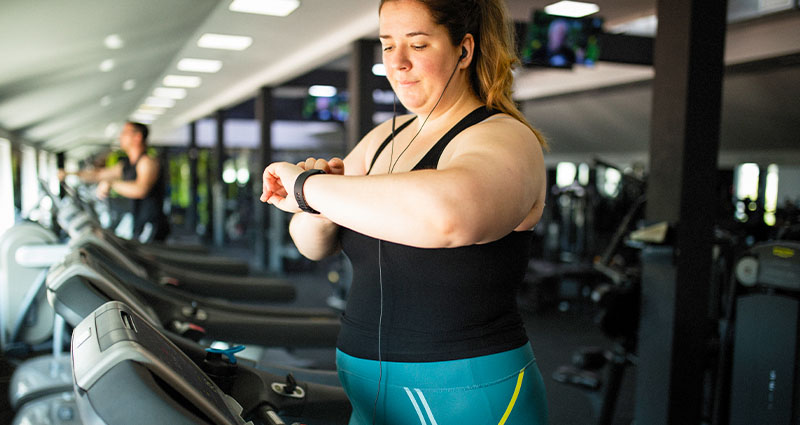4-week walking program

Moving is good for your physical and mental health. Regular walking is one of the best activities out there because it is low impact, is accessible to most people and doesn’t take any special knowledge or skill. This program is designed to help you ramp up your walking habit. Consult with a physician before you start or increase the intensity of an exercise routine to make sure it is safe. This is especially important if you are not already active. Your doctor can also help you set realistic goals. If you know how many steps you normally take, find that number in the left column below. Then add the number in the middle column for your new daily goal. Do that every week for four weeks and you will have increased your daily step count by the number in the third column.
| Current daily step totals | Weekly increase to daily steps | Total increase over 4-week program |
| <2,000 | +100 | +400 |
| 2,000-4,000 | +150 | +600 |
| 4,000-6,000 | +200 | +800 |
| 6,000-8,000 | +250 | +1,000 |
| 8,000-10,000 | +300 | +1,200 |
| 10,000+ | +350 | +1,400 |
Don’t know your average daily step count? Most people who typically move “just a little bit” are usually in the 2,000-4,000 range. A moderate amount would be in the 4,000-6,000 range. If you feel that you walk a lot, then use the 6,000-8,000 range to start with.
Tracking your steps
For this program to work, you’ll obviously need a reliable, accurate way to count your steps. If you already have a device to track steps, such as a pedometer, smartwatch or fitness tracker, you are all set. If you don’t have one, check out one of the many free apps for your phone or inexpensive devices on the market to help you count your steps.
Pace of walking
Over time, the goal is to build up to a moderate-intensity pace in your walks. A good guideline for your speed is how easily you can speak while walking. If you’re breathing too heavily to speak, you’re going too fast. If you can sing along to your walking music or talk in long sentences (more than five to eight words), you’re not going fast enough. Short sentences are the sweet spot.
Week 1: Schedule a walking break
It’s easy to forget to take a walk unless you schedule it into your day. This week, try carving out a sliver of time for walking every day. In fact, maybe do that right now. Pick a time for a short walk and put it on your calendar or set a reminder on your phone. If one long walk is hard to schedule, break it up into smaller walks.
Week 2: Make your day less convenient
Continue the goal from week one (scheduling) and look for ways to add steps to your everyday routine. Thanks to technology, we’re all moving a lot less than our bodies would like. So now, as odd as it sounds, we need to think about ways we can inconvenience ourselves. Here are some ideas:
- Instead of taking the elevator or escalator, use the stairs
- Instead of carrying in all those groceries at once, carry one bag at a time
- Instead of texting or emailing your coworker, get up and walk to his or her desk
- Use a smaller glass or water bottle, or only fill it halfway, so you get up to refill it more often
- Try adding one or two “inconvenient” activities every day this week and watch those steps add up!
Week 3: Increase those scheduled walks
During week one, you scheduled short walking breaks into your day. This week, we’re going to expand on those. There are two ways to do this:
- Take more walks: Schedule another walking break each day—so you double the amount that you are walking.
- Go on longer walks: Increase the time you walk during your already scheduled walking break—so you double the time and number of steps that you are achieving.
Setting aside time for your daily activity is a habit that we know works. So ensure you are using your calendar/schedule to save time for your walks this week.
Week 4: Take the long way
This week, in addition to continuing your goals from weeks one to three, we are going to increase your physical movement by eliminating the shortcut. Similar to making your day less convenient, this week you’ll look to take the long way! Here are a few ideas:
- Take the long way to the restroom. If your home or office setup doesn’t allow for this, try walking up or down a flight of stairs each time you go to the bathroom.
- Park far away from the entrance
- Get off the bus a stop earlier or later
- Walk up and down every aisle of the grocery store, instead of only walking where you need to go
- At your workplace, take indirect routes when walking to coworkers or meetings
End of program
Congrats! You completed our four-week walking program. Did you reach your goal? If you did, that’s great! Keep up all your new healthy stepping habits. If not, don’t worry. Every bit of progress is a step in the right direction that can help improve your health.
Increasing your daily activity can help you feel your best—and so can what’s in your lunchbox. If you need a little inspiration on what to pack, try these 5 healthy lunch ideas.
Was this article helpful?
Building your healthier, together.
This content is not intended to be a substitute for professional medical advice, diagnosis, or treatment. Always seek the advice of your physician or other qualified health provider with any questions you may have regarding a medical condition.










